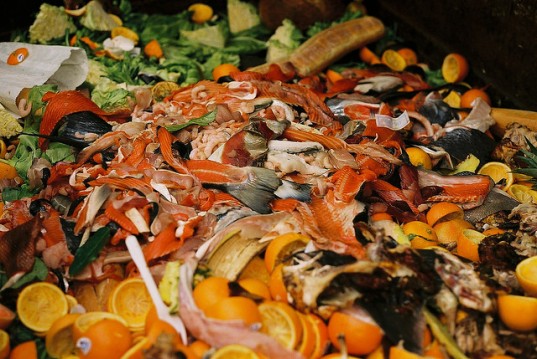Food processing industry around the world is making serious efforts to minimize by-products, compost organic waste, recycle processing and packaging materials, and save energy and water. The three R’s of waste management – Reduce, Reuse and Recycle – can help food manufacturers in reducing the amount of waste sent to landfill and reusing waste.
EPA’s Food Recovery Hierarchy
EPA’s Food Recovery Hierarchy is an excellent resource to follow for food processors and beverage producers as it provides the guidance to start a program that will provide the most benefits for the environment, society and the food manufacturer.
Notably, landfill is the least favored disposal option for waste generated in food and beverage producers worldwide. There are sustainable, effective and profitable waste management options including:
- making animal feed,
- composting to create nutrient-rich fertilizer,
- anaerobic digestion to produce energy-rich biogas,
- recycling/reusing waste for utilization by other industries,
- feeding surplus food to needy people
Waste Management Options
Food manufacturers has a unique problem – excess product usually has a relatively short shelf life while most of the waste is organic in nature. Food waste created during the production process can be turned into animal feed and sold to goat farms, chicken farms etc. As far as WWTP sludge is concerned, top food manufacturers are recycling/reusing it through land application, anaerobic digestion and composting alternatives.
Organic waste at any food processing plant can be composted in a modern in-vessel composting and the resultant fertilizer can be used for in-house landscaping or sold as organic fertilizer as attractive prices.
Another plausible way of managing organic waste at the food manufacturing plant is to biologically degrade it in an anaerobic digester leading to the formation of energy-rich biogas and digestate. Biogas can be used as a heating fuel in the plant itself or converted into electricity by using a CHP unit while digestate can be used as a soil conditioner. Biogas can also be converted into biomethane or bio-CNG for its use as vehicle fuel.
Items such as cardboard, clean plastic, metal and paper are all commodities that can be sold to recyclers Lots of cardboard boxes are used by food manufacturers for supplies which can be broken down into flat pieces and sold to recyclers.
Cardboard boxes can also be reused to temporarily store chip packages before putting them into retail distribution boxes. Packaging can be separated in-house and recovered using “jet shredder” waste technologies which separate film, carton and foodstuffs, all of which can then be recycled separately.
Organizing a Zero Landfill Program
How do you develop a plan to create a zero landfill program or zero waste program in food and beverage producing company? The best way to begin is to start at a small-level and doing what you can. Perfect those programs and set goals each year to improve. Creation of a core team is an essential step in order to explore different ways to reduce waste, energy and utilities.
Measuring different waste streams and setting a benchmark is the initial step in the zero landfill program. Once the data has been collected, we should break these numbers down into categories, according to the EPA’s Food Recovery Challenge and identify the potential opportunities.
For example, inorganic materials can be categorized based on their end lives (reuse, recycle or landfill). The food and beverage industry should perform a waste sort exercise (or dumpster dive) to identify its key streams.
Nestlé USA – A Case Study
In April 2015, Nestlé USA announced all 23 of its facilities were landfill free. As part of its sustainability effort, Nestlé USA is continually looking for new ways to reuse, recycle and recover energy, such as composting, recycling, energy production and the provision of safe products for animal feed, when disposing of manufacturing by-products.
Employees also work to minimize by-products and engage in recycling programs and partnerships with credible waste vendors that dispose of manufacturing by-products in line with Nestlé’s environmental sustainability guidelines and standards. All Nestlé facilities employ ISO 14001-certified environmental management systems to minimize their environmental impact.
Recommended Reading: Renewable Energy from Food Recycling














